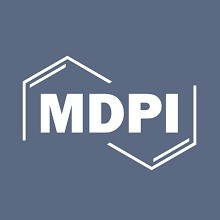
دانلود مقاله توسعه اخیر فازهای ساکن کروماتوگرافی مایع برای جداسازی ترکیبی
خلاصه
1. معرفی
2. اصل جداسازی ترکیبات در کروماتوگرافی مایع
3. توسعه فازهای ثابت برای جذب و تصفیه انتخابی پروتئین
4. توسعه فازهای ثابت برای ترکیبات کایرال کوچک
5. توسعه فازهای ثابت برای جذب PAH
6. چشم انداز
مشارکت های نویسنده
منابع مالی
منابع
Abstract
1. Introduction
2. The Principle of Separation of Compounds in Liquid Chromatography
3. Development of Stationary Phases for Selective Protein Capture and Purification
4. Development of Stationary Phases for Small Chiral Compounds
5. Development of Stationary Phases for PAHs Capture
6. Outlook
Author Contributions
Funding
References
چکیده
جداسازی ترکیبات نقش کلیدی در تولید و آنالیز ترکیبات شیمیایی دارد. روش های مختلفی برای به دست آوردن نتایج جداسازی با کیفیت بالا ارائه می شود. کروماتوگرافی مایع یکی از رایج ترین ابزارهایی است که در جداسازی ترکیبات در مقیاس های طولی، از بیوماکرومولکول های بزرگتر تا ترکیبات آلی کوچکتر مورد استفاده قرار می گیرد. کروماتوگرافی مایع همچنین سهولت اصلاح، توانایی ترکیب فازهای متحرک و ثابت سازگار، توانایی انجام آنالیزهای کمی و کیفی و توانایی تغلیظ نمونهها را فراهم میکند. قابل ذکر است، ویژگی اصلی یک راه اندازی کروماتوگرافی مایع، فاز ساکن است. فاز ثابت به طور مستقیم با نمونه ها از طریق حالت های مختلف برهمکنش های پایه بر اساس میل ترکیبی، اندازه و برهمکنش های الکترواستاتیکی برهم کنش دارد. فعل و انفعالات مختلف بین ترکیبات و فاز ساکن در نهایت منجر به جداسازی ترکیب می شود. سالهای اخیر شاهد توسعه فازهای ثابت برای افزایش انتخابپذیری اتصال، قابلیت تنظیم و قابلیت استفاده مجدد بودهایم. برای نشان دادن استفاده از کروماتوگرافی مایع در مقیاس های طولی مولکول های هدف، این بررسی توسعه اخیر فازهای ثابت برای جداسازی پروتئین های درشت مولکول و ترکیبات آلی کوچک، مانند مولکول های کوچک کایرال و هیدروکربن های آروماتیک چند حلقه ای (PAHs) را مورد بحث قرار می دهد.
Abstract
Compound separation plays a key role in producing and analyzing chemical compounds. Various methods are offered to obtain high-quality separation results. Liquid chromatography is one of the most common tools used in compound separation across length scales, from larger biomacromolecules to smaller organic compounds. Liquid chromatography also allows ease of modification, the ability to combine compatible mobile and stationary phases, the ability to conduct qualitative and quantitative analyses, and the ability to concentrate samples. Notably, the main feature of a liquid chromatography setup is the stationary phase. The stationary phase directly interacts with the samples via various basic mode of interactions based on affinity, size, and electrostatic interactions. Different interactions between compounds and the stationary phase will eventually result in compound separation. Recent years have witnessed the development of stationary phases to increase binding selectivity, tunability, and reusability. To demonstrate the use of liquid chromatography across length scales of target molecules, this review discusses the recent development of stationary phases for separating macromolecule proteins and small organic compounds, such as small chiral molecules and polycyclic aromatic hydrocarbons (PAHs).
Introduction
Separation is a critical process to isolate a particular compound, whether it is a natural product or a synthetic product. Studies of a compound’s characteristics and elucidation structure provides reliable results for pure compounds because there is no interference from other compounds. The primary source of difficulty in a separation process is the high similarity between two or more compounds, such as racemic and homologous mixtures. Liquid chromatography has proven to be an effective solution to those problems. The key to liquid chromatography separation is a sustainable retention and elution process. Stationary phases essential for separating compounds in liquid chromatography. Various liquid chromatography columns of both preparative and quantitative types have been used and continue to develop. For this reason, multiple studies and publications related to liquid chromatography can be found and accessed easily.
This review will discuss recent developments in liquid chromatography stationary phase technology for compound separation. Analytes that were once inseparable can now be separated and appropriately analyzed. The discussion focuses on the development of column material and separation interactions. This development aims to optimize and overcome the lack of existing columns. This review will discuss three types of analytes to demonstrate the use of liquid chromatography across length scales of target molecules, which are (1) larger biomolecules, particularly the proteins, (2) small chiral molecules, and (3) polycyclic aromatic hydrocarbons (PAHs).
Outlook
As liquid chromatography continues to be one of the main tools in the preparation and analysis of chemical compounds, various developments have been made to improve the binding selectivity and reusability of the columns. The surface chemistry of the stationary phases of silica, polysaccharides, and synthetic polymer matrixes has been adjusted and modified to result in better separation across length scales. The stationary phases can be chemically decorated with desired functional groups to ensure a stable and selective binding to the target molecule. For selective separation of chiral molecules, chiral stationary phases (CSPs) have been prepared using modified polystyrene, cellohydrobiolase, cyclodextrins, chiral metal–organic frameworks (MOF), and ionic liquids as chiral selectors. Hydrophobic surfaces are an essential component of liquid chromatography for PAH binding. Several hydrophobic chemical modifiers have been covalently anchored at silica surfaces to increase their affinities towards PAHs. Moreover, hydrophobic MOF and particle-based acrylics have also been developed as stationary phases to capture PAHs efficiently. In the case of protein capture and purification, affinity chromatography is commonly established through metal–protein complexation as well as ligand–protein complexation. Furthermore, by adjusting the conditions of elution, particularly the pH and ionic strength, hydrophobic charge-induction chromatography (HCIC) and mixed-mode chromatography (MMC) have also been investigated to achieve better protein purification.
